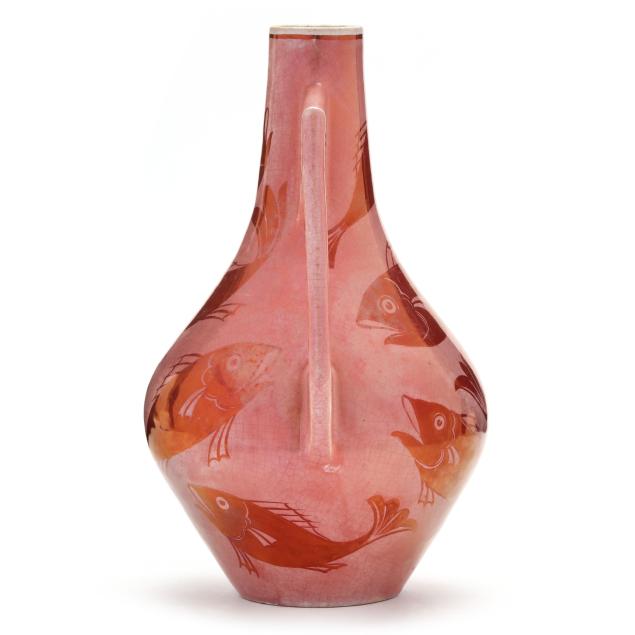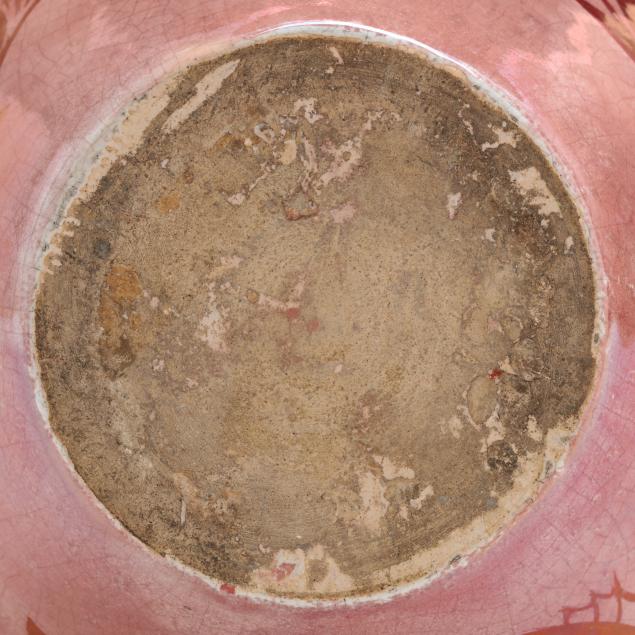
Lot 6098
William De Morgan (British, 1839-1917), Two-Handled Ruby Lustre Vase
Lot Details & Additional Photographs
11 1/4 x 8 1/2 x 6 3/4 in.
Private Collection, Durham, North Carolina
This work by De Morgan is very similar in form and decoration to a vase in the Arts & Crafts collection at the Standen House in West Sussex, England.
The eldest child of progressive parents, William De Morgan began his formal training as a fine artist, before being led by his scientific and mathematical investigations to the decorative arts, creating stained glass, designing his own kilns, undertaking investigations in chemistry to create innovative lustre glazes, and finally enjoying a second career as an author of popular fiction.
William studied at the Royal Academy of Arts in London under the tutelage of Charles Eastlake from 1859-1863. Around 1863, William De Morgan met William Morris at his studio at Red Lion Square, which proved a pivotal time in the young artist's career into decorative arts. De Morgan left the Academy after four of the eight years of study to pursue interests in stained glass and furniture. Deep interests into the chemical alchemy of stained glass, lead to further investigations and techniques in ceramics, particularly with regard to his lustreware works.
During the 1870s and 1880s, De Morgan's reputation grew for his ceramic works within the Arts & Crafts movement. One of his early major commissions included installing Frederick, later Lord, Leighton’s collection of Damascan and Iranian tiles into the ‘Arab Hall’ extension of his Holland Park home from 1877-1881. These middle eastern designs would be highly influential on the artists own oeuvre.
Although his ceramic output would come to a close by 1907, with the encouragement of his wife, Evelyn, he would go on to develop a second career in writing. His first novel, the semi-autobiographical "Joseph Vance", was published in 1906 by William Heinemann, and was a huge international success. William went on to write seven novels.
Scattered crazing; two small glaze flakes where handle meets body; some minor glaze thinness and skips.










